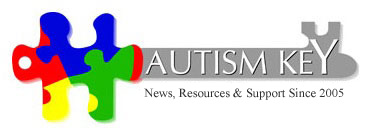Autism Awareness Event Recreates Sensory Challenges
A wonderful story has been reported out of Kentucky where a mother of twins with autism created an event for neurotypical children at her sons’ school to experience what it’s like to have autism. During Cumberland Trace Elementary School’s Autism Awareness Day, organizers manned five different sensory stations designed to let children experience first-hand the challenges children with autism face every day.
At the touch sensory booth, a volunteer gave students sleeves made of coarse burlap to wear for a few minutes as she explained to them that some children with autism have a distorted sense of touch. When they put on the burlap cloth, students complained that it was rough and itchy.
“Some children deal with that 24 hours a day,” she told students. “Would you want to wear this all the time? This is what they have to deal with every day.”
“Kids that have autism think differently than we do. Their brain is wired a little differently,” concluded a fifth-grader. “To us, our clothes feel soft and comfortable, but to them, their clothes might feel scratchy.”
At another station, children were put in pairs and asked to hold a conversation while one of them listened to a cassette player. They soon realized how hard it is for the child with autism to concentrate when background noise overwhelms them.
In order to demonstrate the warped sense of smell many children on the autism spectrum experience, the children were given a mixture of garlic and peppermint to inhale.
The station designed to replicate sensitivity to light involved students closing their eyes for 15 seconds, then opening them without blinking for 10 seconds. Many children couldn’t keep their eyes open and other eyes were running with water. They learned that this is what their peers with autism may experience every time they enter a room with bright lights.
Children were given extremely sour candy at the taste station. While some liked it, others couldn’t abide it. “It was very sweet and it made my mouth feel really weird,” reported a second-grader before concluding, “I can see that they taste things differently than us.”
The conclusions the children themselves drew are the most touching element of this report. Obviously, curriculum that engages the senses is more powerful than any lecture about autism. Inherently, this event is also a compelling method of reducing bullying of children with autism and would be an excellent component to anti-bullying programs in schools.
I can imagine this same event as part of an early PTA meeting in which a guest autism speaker addresses parents about autism inclusion programs within their schools, after which the parents visit the sensory tables. Engendering empathy and allaying the fears and misconceptions of parents of neurotypical children would help them send positive messages to their children about their classmates with autism and create a more warm, supportive school atmosphere.
And then my mind immediately conjures a bevy of teachers and administrators I’ve had the displeasure of encountering who would do well to make a trip to those tables themselves.
I love this story of one mother’s inspiration generating this wonderful event and I’m glad that her school rallied behind her idea. Creative methods of expanding awareness about autism give real meaning to Autism Awareness Month.

